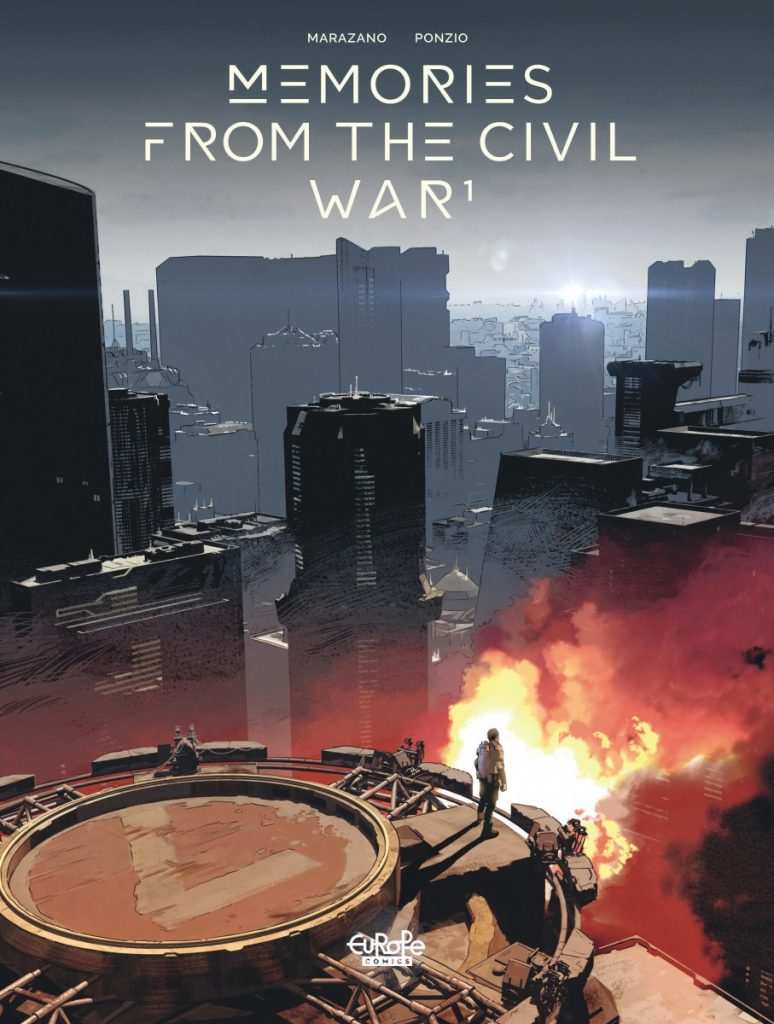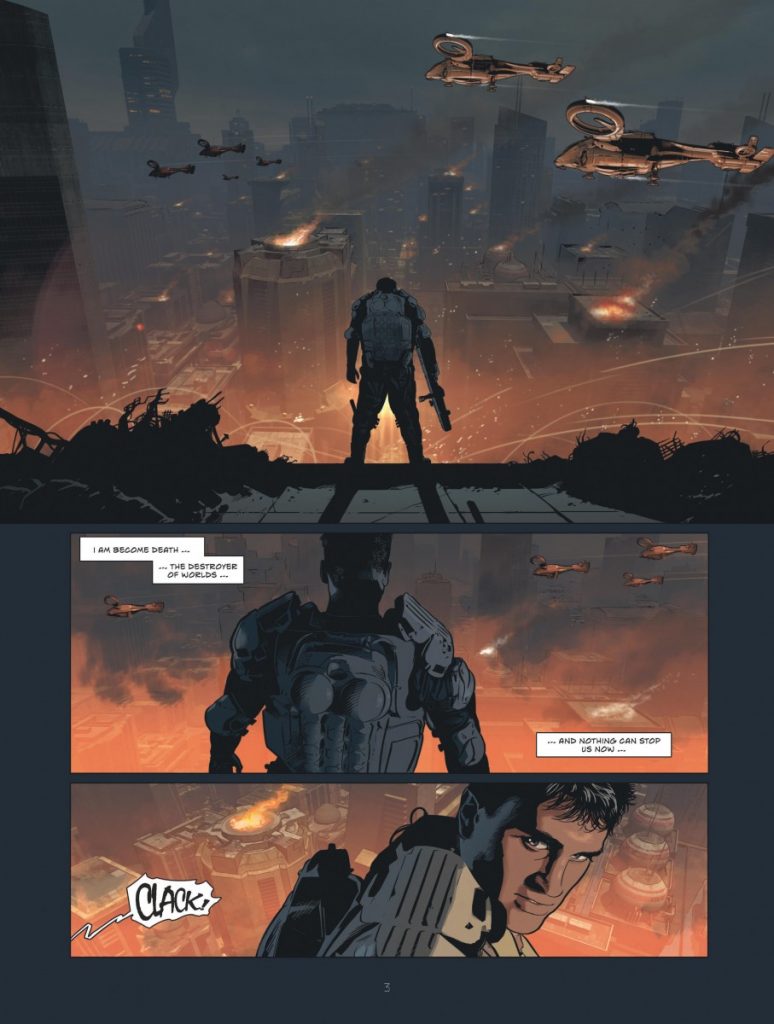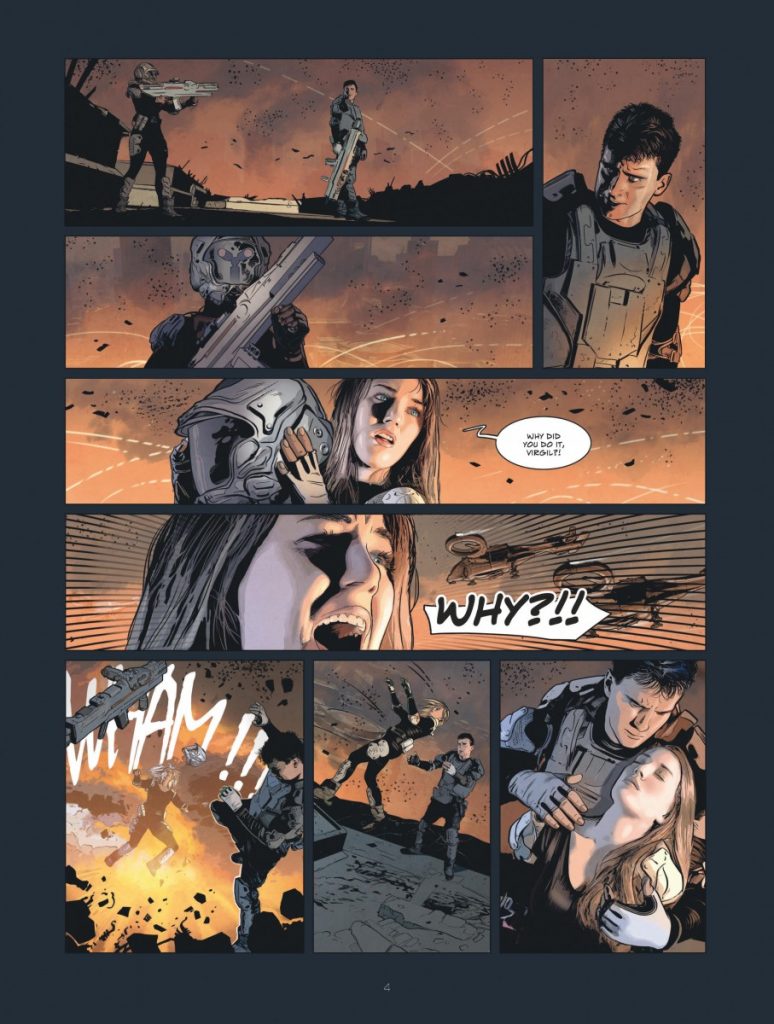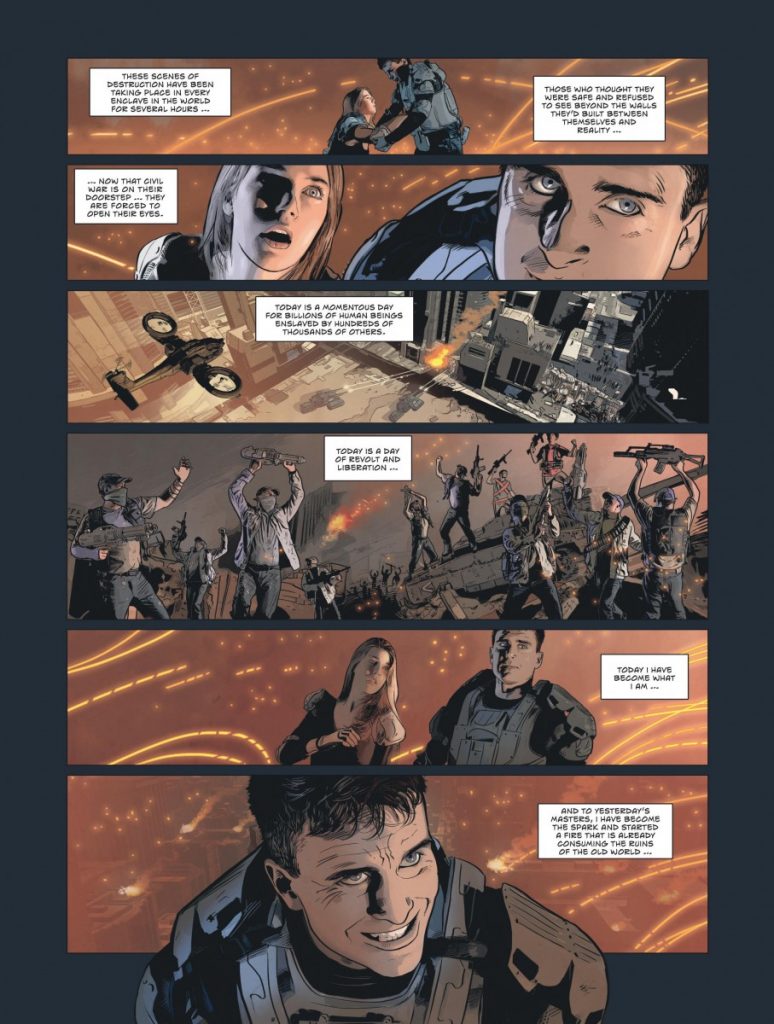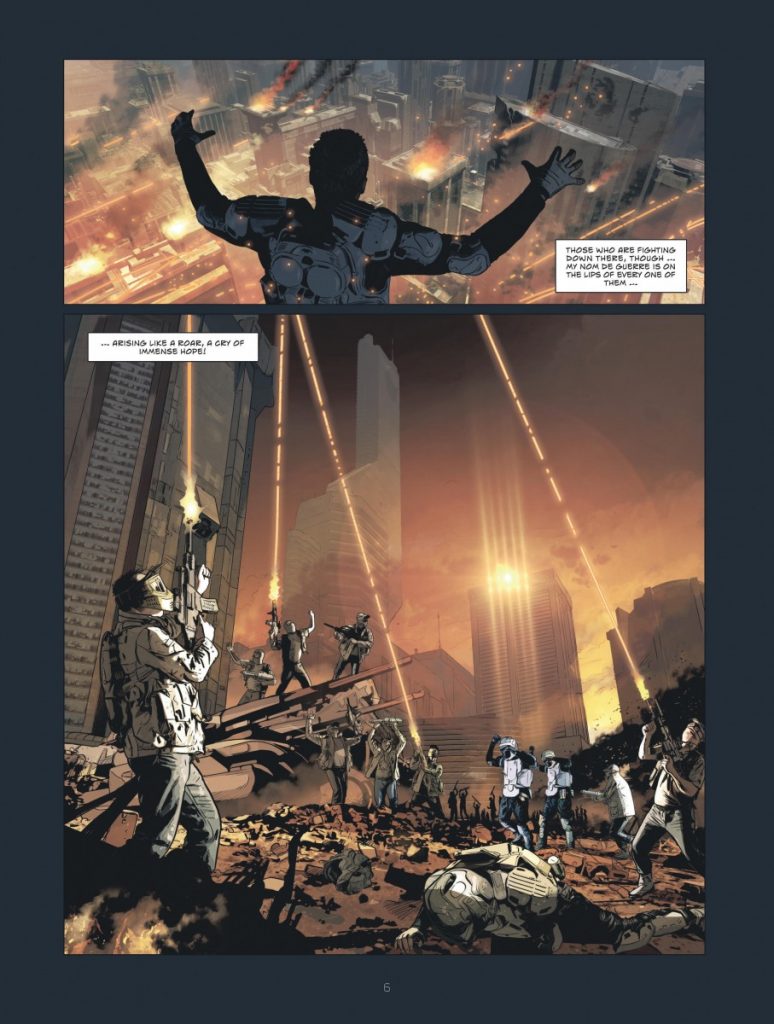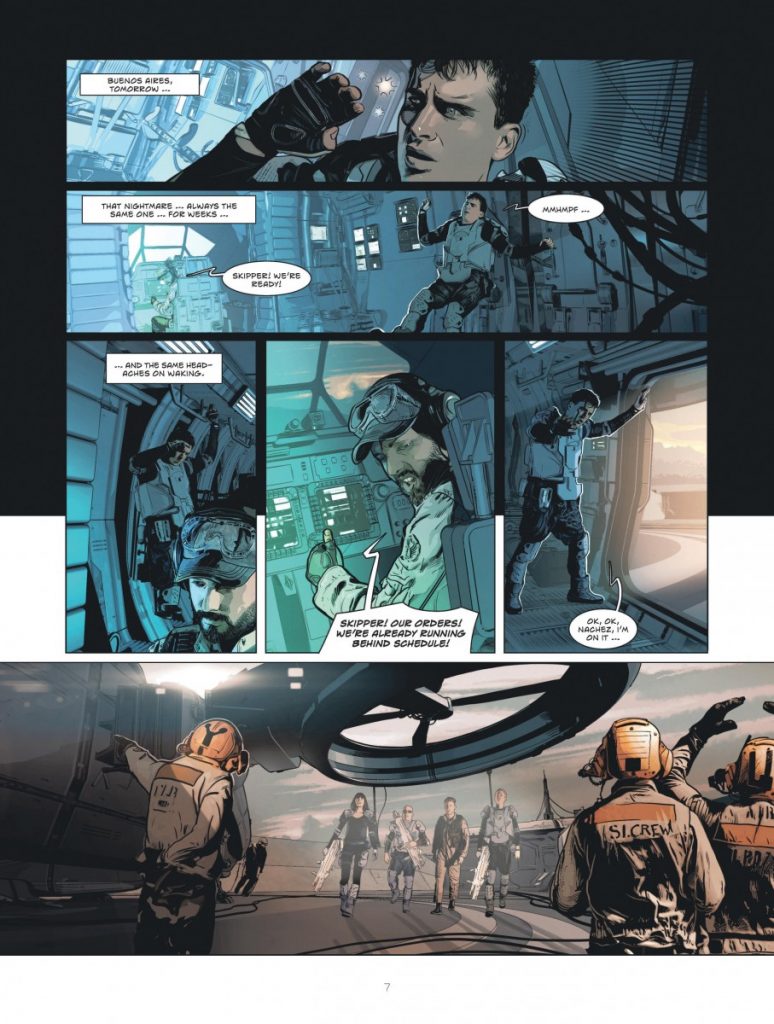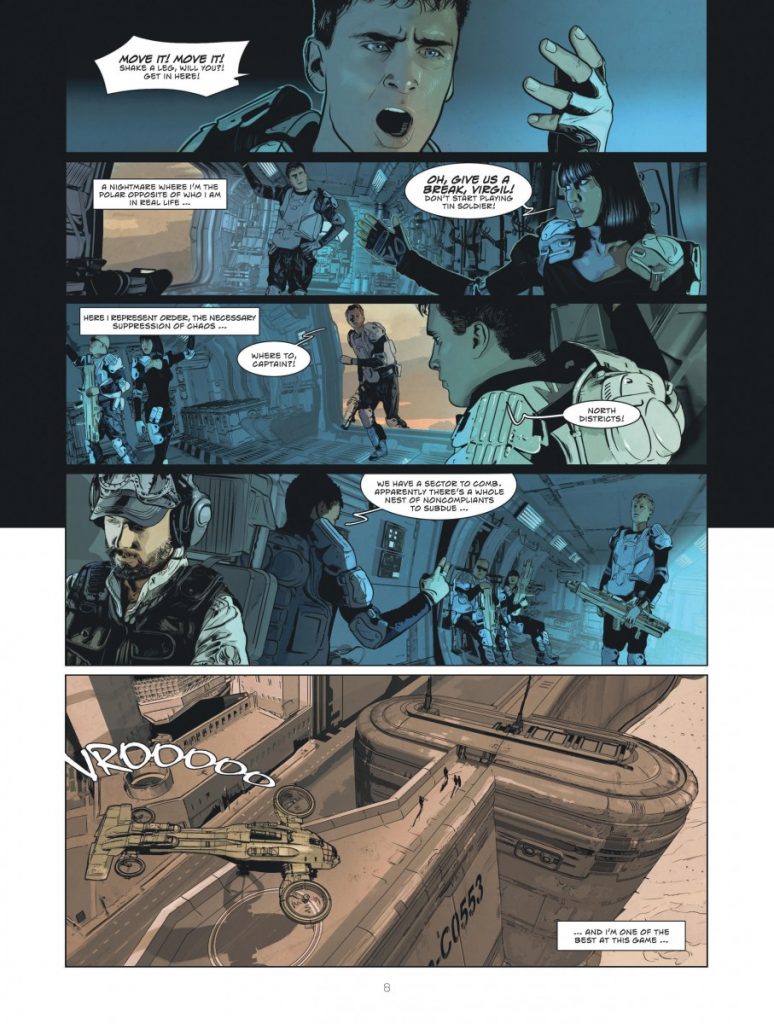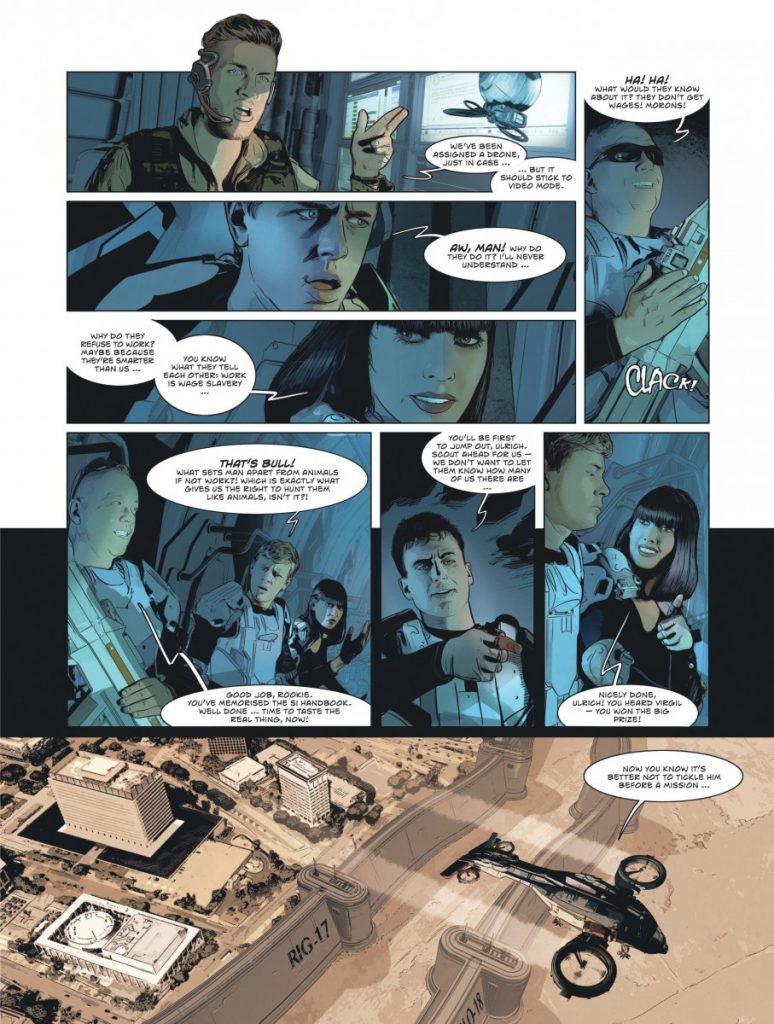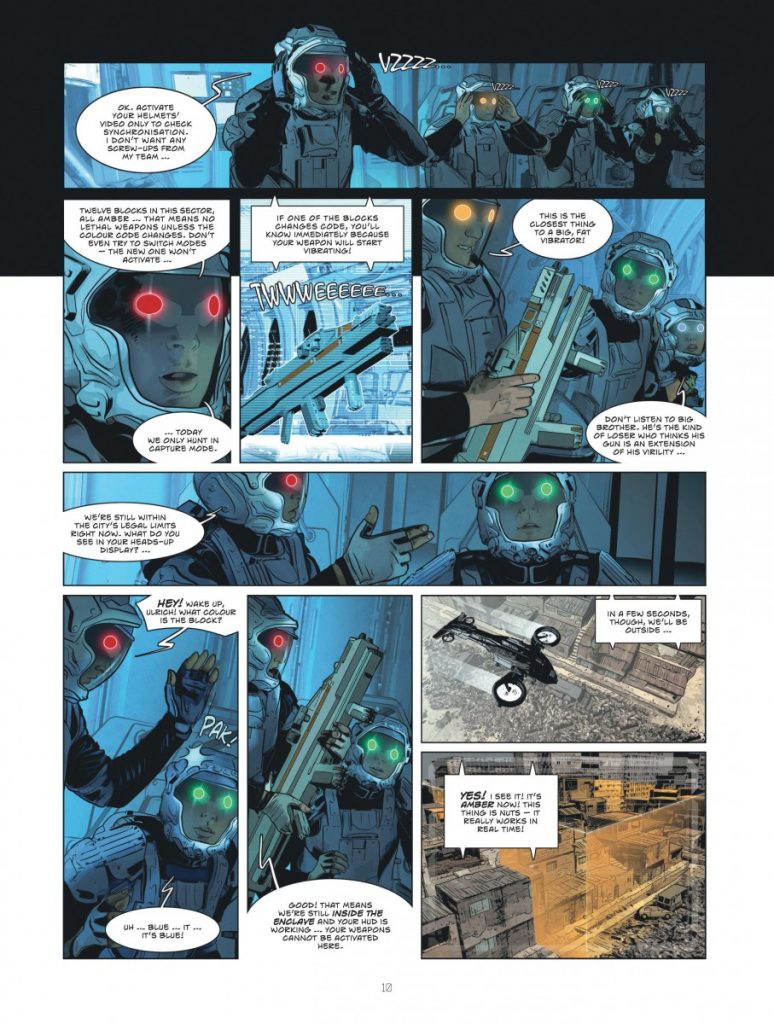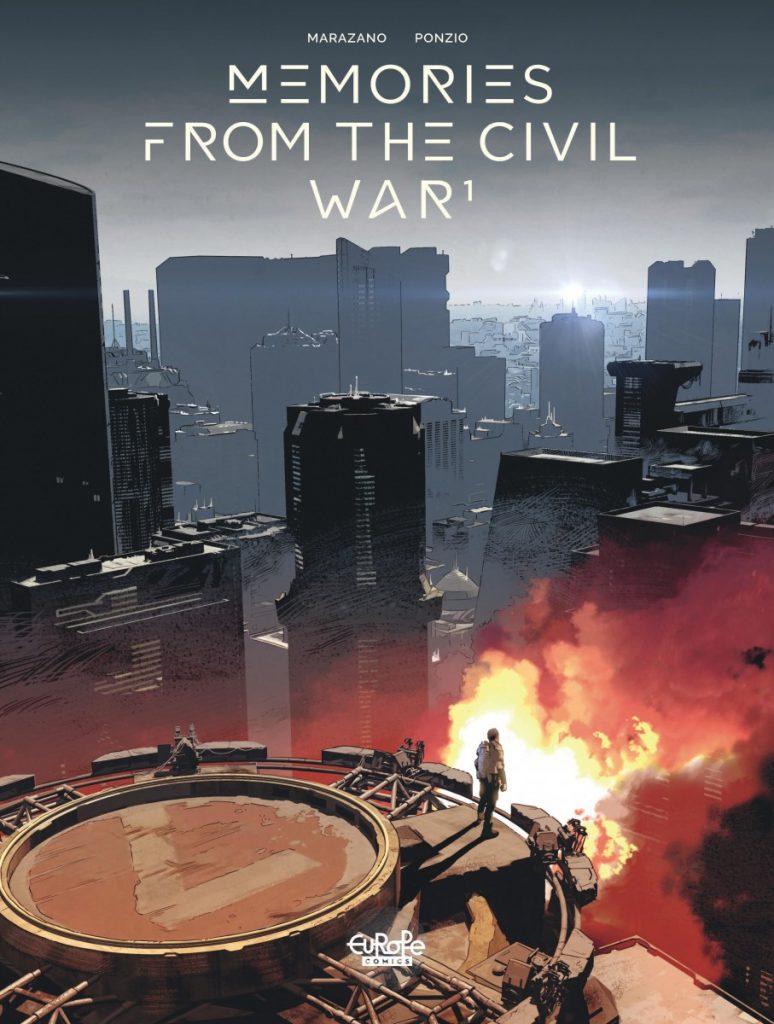
Script by Richard Marazano
Art by Jean-Michel Ponzio
Available on: www.Comixology.com
http://www.europecomics.com/album/memories-civil-war-v1/
In a not-so-distant future, mankind’s greed and short-sightedness have exhausted the planet. The vast majority of the population lives in misery among the ruins of civilization, while a small, privileged minority continues to enjoy a luxurious existence inside a few fortress-cities scattered around the globe, the Enclaves. Vivian is a member of the elite forces that protect and sustain this utopia—by any means necessary.
Have you ever read a book, watched a movie or started a TV that was kinda of confusing but you were entertained enough to keep going? Maybe it was the art, the special effects, or just pure “need to know” but you stick with it. And just when you think you start to understand, the credits roll, the episode ends, or the issue runs out of pages.
This is how I describe reading volume one of Memories of the Civil War. Marazano and Ponzio are both highly rearguard for their work on Chimpanzee Complex, so they had my attention on name cred alone. Originally titled Mémoires de la Guerre civile and published in French in 2017, I read the English translation by Jerome Saincantin published by Cinebook LTD in 2019. Maybe some things were lost in translation, but more on that later.
Our story starts as our main character, Virgil, stands atop a skyscraper looking down burning metropolis as he quotes J. Robert Oppenheimer, “I am become Death the destroyer of worlds and nothing can stop us now” Virgil is confronted by a woman in similar arms and armor and delves into a deep inner-monologue as we see beautiful rendered panels of red and orange, the flames and dust of a once great city taken down by street level rioters.
Flash forward to….Tomorrow. Wait, what?
Turns out the first nine pages or so are a dream/vision Virgil is having as he snoozes on a troop transport kinda like the flying machines seen in Avatar (the one with the blue Native-Americans, not the air benders). It’s there we get a very basic rundown of how society works. People are separated into enclaves based on socioeconomic standing. Virgil and this team are hunters who go after human prey to either bring back as labor or breeders (shivers) to this home enclave. Although if the prey, or the entire enclave, are branded as enemies of order and justice, they are deemed unworthy of breath and can be executed on he spot.
That’s right. Virgil and his team, the heroes we are following, are a bunch of well armed jackbooted high tech SS types. Pretty much like the Hunger Games except out “heroes” are the city guards dress in white with big guns.
As the story progresses, we find that our heroes are both loved and hated by their own people. They have a good service record and receive accolades for their efforts, but do have a giant black mark on their records, that resulted in the loss of the Tokyo enclave, that is continually thrown in their faces.
The story does take a few weird turns early one. Virgil and his team get in a bar fight while on furlough and he is stunned with a tazzer-like weapon….and in a coma for six months (again…what?). Virgil wakes up fit as a fiddle and ready for active duty, but this time they have a new member of the team, Rachel. Rachel is there to assess the team’s psychological balance in the field and seems to have deep history with Virgil…none of which is explained, but as I say in the opening it’s enough to keep you reading. During the mission, the team comes across no resistance because all the resistance are dead. An entire warehouse of dead human and pigs (yes, pigs) take out by what appears to be drones armed with machine guns.
Cut to Virgil have a heated conversation post-coitus with the female team member he is currently romantically, or at least sexually, involved with and he drifts off to sleep to have the same dream/vision of him leading the revolutionary attack on his enclave.
Next scene, Vigil and his fire team of ass-kickers are sent back to boot camp for a day to get harassed for the loss of the Tokyo enclave. Not really sure why this happens, there is no context for it. They get the job done and go home.
The rest of the story plays out with some reoccurring imagery that leads us to believe that Virgil maybe hiding something, maybe even subconsciously. It’s very dense storytelling at this point in the book that I had to re-read more than twice to figure out what is going in.
Overall, the story is strong and compelling enough to keep reading and sometime struggling to get through. There are more than a few times in the 60-straight pages that I felt like there were some things were lost in translation. My first clue were spots where I believe there was supposed to be cursing/swearing but the translation, and maybe an attempt to make it a PG-13 is book. Others spots in the book are where entire scenes felt out of place. Like when you watch the directors cut of a movie and realize why an interaction or entire scene was left out of the movie.
It was times like these that I could fall back on Jean-Michel Ponzio’s art. His use of the digital aspects and traditional art makes this book a beauty to look at. The details of the wide war-torn landscapes down to the intricacies of the weapons and armor kept my eyes sweeping over the page well after I was done with the text. In many ways it’s what kept me going through parts of the book I just wasn’t connecting to.
Bottom line is that Memories of the Civil War didn’t check every box for me. That being said, it did check the most important box of, “Do I want to read the next issue?” and that answer is Yes.
Pullbox Score: 10 out of 13
